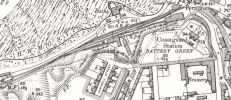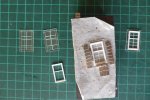Thanks to all for a rousing welcome.
Ian N has pretty much nailed gravity shunting at Banff. I've been around this topic a couple of times previously, but since I lit this fire, it's my duty to put it out.
The existence of a goods loop seems to have been a myth perpetuated by later OS surveys, signalling diagrams, Ian Futers' Modelling Scotland's Railways and Greenock & Districts Inverboyndie. Ian Noble appears to have stuck with the prototype in his 2mm layout. Moreover, such a loop, had it existed, would have done nothing for carriage stock and further limited the usefulness of the restricted goods yard.
There are 2 videos on Youtube showing gravity shunting on Banff passenger–only services:
So, "down" trains from Banff to Tillynaught would have run in standard formation: loco followed by a 1st/3rd non-corridor composite and a 3rd/brake with the brake at the rear. At Tillynaught, the loco would run around the carriages, so that the "up" formation was tender/bunker-first loco, 3rd/brake with the brake leading then the 1st/3rd composite.
Having arrived at Banff, the train would enter the covered platform, the passengers would disembark, then the carriages would be propelled back up the line/hill towards Tillynaught. Once past the engine shed siding, the train would stop, the guard's brake applied, the engine uncoupled and slipped into the engine siding. The guard's brake would then be released, and the carriages rolled back into the covered platform under the control of the guard and his brake, The loco would then return to it's rightful position at the head of the train, ready for the next "down" service, possibly having picked up any wagons from the goods yard for a "mixed" service, with the wagons at the head of the train..
There is a lengthy reply to the question of Banff operations in this thread over on RMWeb: 1950's operations at Banff, including tail-roping, where a wire rope from the loco coupling hook was used to move wagons. Also over on RMWeb is a discussion of the signalling at Banff: Signalling for Banff, Scotland.
For the model, I have a Replica Railways powered chassis which one day will find it's way into a carriage to replicate gravity shunting via a DCC consist. Similarly, a Black Beetle will go into a goods wagon or brake wagon. In the meantime, it will be the Hand-of-God, or a non-prototypical station pilot engine.
Ian N has pretty much nailed gravity shunting at Banff. I've been around this topic a couple of times previously, but since I lit this fire, it's my duty to put it out.
The existence of a goods loop seems to have been a myth perpetuated by later OS surveys, signalling diagrams, Ian Futers' Modelling Scotland's Railways and Greenock & Districts Inverboyndie. Ian Noble appears to have stuck with the prototype in his 2mm layout. Moreover, such a loop, had it existed, would have done nothing for carriage stock and further limited the usefulness of the restricted goods yard.
There are 2 videos on Youtube showing gravity shunting on Banff passenger–only services:
- Easter 1959 in Scotland 3 The line to Banff courtesy of Unseen Steam
- Scottish Branch lines- Banff with Steam Loco Cab ride (1964) courtesy of 52761b
So, "down" trains from Banff to Tillynaught would have run in standard formation: loco followed by a 1st/3rd non-corridor composite and a 3rd/brake with the brake at the rear. At Tillynaught, the loco would run around the carriages, so that the "up" formation was tender/bunker-first loco, 3rd/brake with the brake leading then the 1st/3rd composite.
Having arrived at Banff, the train would enter the covered platform, the passengers would disembark, then the carriages would be propelled back up the line/hill towards Tillynaught. Once past the engine shed siding, the train would stop, the guard's brake applied, the engine uncoupled and slipped into the engine siding. The guard's brake would then be released, and the carriages rolled back into the covered platform under the control of the guard and his brake, The loco would then return to it's rightful position at the head of the train, ready for the next "down" service, possibly having picked up any wagons from the goods yard for a "mixed" service, with the wagons at the head of the train..
There is a lengthy reply to the question of Banff operations in this thread over on RMWeb: 1950's operations at Banff, including tail-roping, where a wire rope from the loco coupling hook was used to move wagons. Also over on RMWeb is a discussion of the signalling at Banff: Signalling for Banff, Scotland.
For the model, I have a Replica Railways powered chassis which one day will find it's way into a carriage to replicate gravity shunting via a DCC consist. Similarly, a Black Beetle will go into a goods wagon or brake wagon. In the meantime, it will be the Hand-of-God, or a non-prototypical station pilot engine.

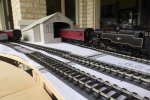
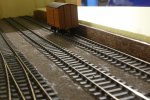
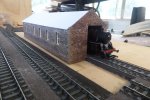
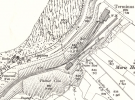

 there's no set track, no 8ft x 4ft board, no roundy-roundy....
there's no set track, no 8ft x 4ft board, no roundy-roundy.... 

